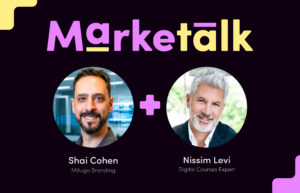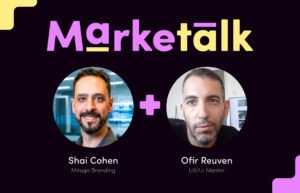A Little Big Secret for Success in Every Campaign
The following article is going to change some of your perceptions about graphic design. If the term “graphic designer” brings to mind an image of a frustrated artist sitting in a print shop or newspaper, trying their hardest to please an angry client, then you are likely still trapped in an outdated notion. By the end of this article, your perspective will likely shift, and you will start to see the business world from a slightly different angle.
Let’s take a moment to break down what your eyes have seen today. It’s likely that the world you saw was divided into three parts:
Nature – Everything that is created not by humans: the sky, the earth, the trees, the animals, the mountains, and even humans themselves (since we have no control over our appearance, we fall into this category).
Engineering – This category includes buildings, bridges, cars (seriously! how many cars?!), machines, pencils, and computers. Simple.
Graphics – Communication. Written media, designed media, filmed media, animated media, advertisements (oh my! how many advertisements?!), signs, websites, Facebook, Instagram… everything is graphics.
Wow, what an insight – roughly a third of what we see is created by graphic designers! Let’s digest that. One third. The first time I realized this, I decided to become a graphic designer. At the time, I was a VP of Marketing and Business Development at a company, with a company car, salary, and senior position. Still, the significance of graphics for the success of the projects I created was critical – if the graphic designer didn’t fit well with my project, it was likely doomed to inexplicable failure before it was even born. As a marketing manager, I had so many ideas and tied hands; the graphic designer was my savior – the person on whom my creativity and initiatives depended to come to life. I wanted to be the driver of my initiatives, not the passenger, so I transformed myself (despite a lack of talent in drawing) into a successful graphic designer. My main success lay in bringing principles from the world of marketing and sales into this field, allowing me to bypass all the predictable (and unnecessary) paradigms of graphic designers and open my own studio immediately after finishing my studies.
How Does This World Integrate?
To produce good design, all you need is respect—give respect to the graphic processes, and they will reward you with customers. Think for a moment about the largest companies in the world—do you see them disregarding the precision with which their graphics are executed? Absolutely not. Everything is done at the highest level; they employ armies of graphic designers who focus solely on maintaining the company’s exact message across all possible media. High-quality graphics convey messages effectively. Disrespect them, pay cheaply, or try to cut corners, and you’re likely headed for a failure that will end with you shrugging your shoulders and blaming the graphic designer, the market, the recession, the media—anyone but yourself. If you want high-quality graphic processes, I wouldn’t recommend skipping our excellent article on 5 Principles of Graphic Design for Businesses. We understand that we need quality, invested graphics, but before you go read that article, let’s see how to create graphics that powerfully drive customers in your direction.
The Customer Must See Themselves in the Graphics
This is the most significant principle you can adhere to throughout the process, and it will serve as your compass during the design phase. To maintain the customer’s attention, you must show them their image after the purchase—the most important emotion in advertising is the moment of solving the customer’s pain. The message of pain relief must come across—even if you choose to depict someone holding their mouth due to a toothache (pain), the caption must complete the picture with the solution to the pain. The viewer must see themselves (the one in pain) and the solution within 1.7 seconds. That’s it.
If your graphic includes 40 products on a flyer, you are not advertising—you are providing information. This might result in a sale, but there’s no creativity, no driving force for customers—it’s a matter of luck. If you’re the only one who advertised the products, if your customer really needs them, or has plenty of time, they might respond to you. Even then, with some luck, they’ll come to buy a specific product at a specific price. This is a low and outdated form of advertising; I would abandon it and focus on making the customer understand that you consistently and reliably solve their problems. Graphics can help here; they can be given high targets, tasked with bringing in new customers without an agenda and with a limited budget. It is possible, permissible, and desirable to raise the level—and it starts with respect—respect for the status of graphic design. Believe that design can perform wonders, and it will. Give it a marginal place, and it will be your downfall—it’s that simple.
Graphic design is a business process.
In summary, the path to recognition of graphic design as one of the important professions is still long. Even though a third of our day is spent in a sea of graphics, graphic designers are still not considered as important a profession as lawyers or engineers. However, they have such a profound influence on the lives of those exposed to their work. If you are a business owner, your change begins here. Investing in precise graphic design will lead you to the achievements you expect. Learn the graphic world as you understand cars without being a mechanic or medicine without being a doctor. The mechanics of your advertising is graphic design—expand your knowledge in the field, respect the professionals who sweat for you, and achieve business results. Good luck!




